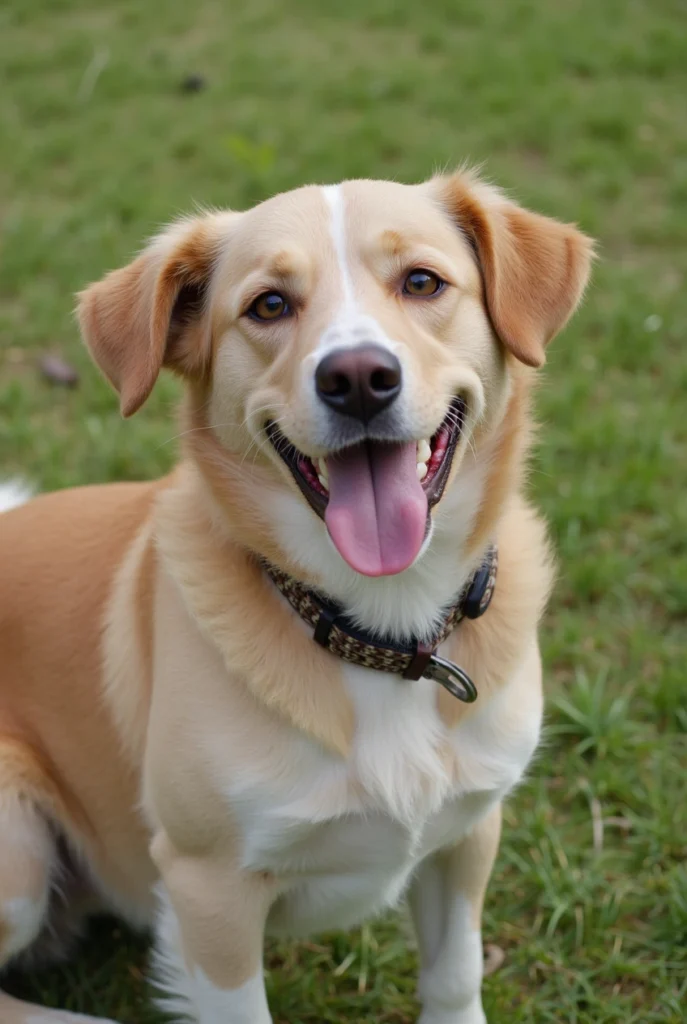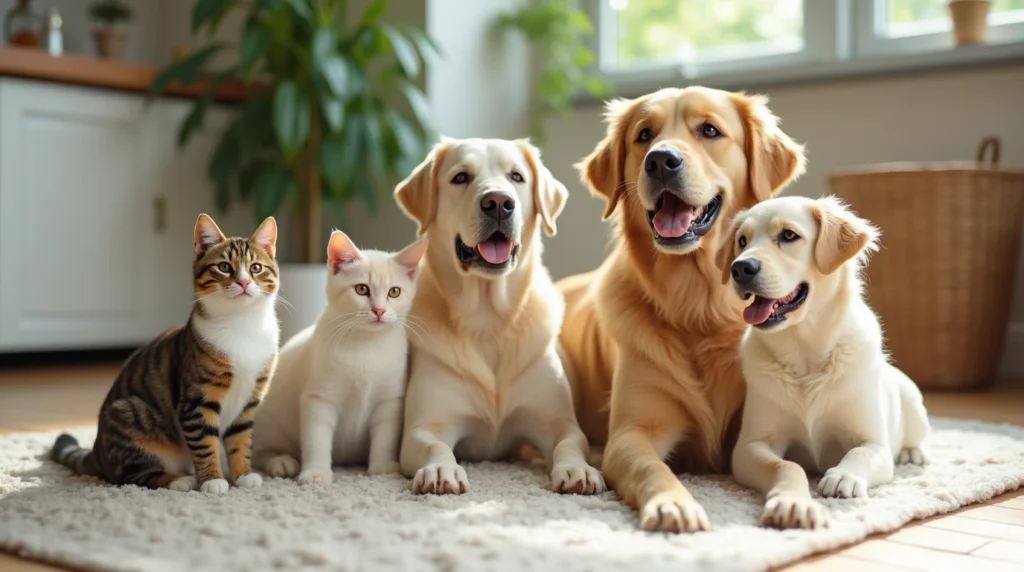best cat breeds for dogs-Why Some Cats Just Get Dogs (and Vice Versa)
Ever watched a cat curl up next to a snoozing Labrador and wondered — how on earth did that happen? If you’re a dog parent thinking of expanding your furry family, you’re probably asking yourself one critical question: Are there cats that actually like dogs?
Short answer: Yes. Long answer? It depends on the cat’s personality, upbringing, and breed.
This guide is your shortcut to avoiding those dramatic hiss-and-bark confrontations. We’re diving into the best cat breeds for dog owners — felines that aren’t just tolerant of dogs, but often seek them out as playmates, companions, and even protectors (yes, really).
You’ll discover:
- Which cat breeds are naturally social and adaptable
- How feline temperament can complement your dog’s energy
- What to consider before bringing a cat into your dog’s domain
Because here’s the truth: not all cats are aloof, solitary divas. Some are dog-like in all the right ways — they’ll greet you at the door, play fetch, and even learn commands. But compatibility isn’t just about breed — it’s about energy match, social cues, and trust-building.
Let’s decode which cats play nice with your pup — and which ones might turn your living room into a turf war.

Table of Contents
Understanding Cat-Dog Dynamics: What Makes Them Click (or Clash)
Before we get into which breeds are best, let’s zoom out: what actually makes cats and dogs get along? Is it magic, luck, or something more tangible?
Turns out, it’s a mix of social wiring, early exposure, and shared temperament.
Nature vs. Nurture (Yes, Even for Pets)
Some cats are naturally more social — think of breeds that evolved to be lap cats or village companions. But even the friendliest feline might act like a drama queen if she wasn’t properly socialized around dogs.
On the flip side, a chill, well-trained dog who respects boundaries is half the battle. Dogs with low prey drive and steady energy (like Golden Retrievers or Cavalier Spaniels) tend to pair better with curious, confident cats.
And let’s be honest: how you introduce them matters as much as their breed.
How to Set the Stage for Peace (Not Pet Wars)
- Start slow: Let them sniff each other under a door before a face-to-face.
- Use scent swapping: Rub a towel on one pet and place it near the other’s sleeping spot.
- Give the cat vertical escape routes: Cat trees, shelves, or quiet rooms can help reduce tension.
- Don’t force it: Let them take the lead, even if it means weeks of cautious glances and slow tail flicks.
Can Any Cat Live with a Dog?
Q: Can any cat live with a dog if introduced properly?
A: Not necessarily. While introduction techniques help, some cats — especially those with high anxiety or strong prey instincts — may never fully adjust to living with a dog. Breed matters, but so do the individual cat’s personality and past experiences.
10 Best Cat Breeds for Dogs: Feline Companions with a Canine Soul

Not all cats are aloof sunbeam-chasers. Some are affectionate, playful, and startlingly dog-like — minus the drool and daily walks. If your household already has a canine co-captain, these ten breeds are known for thriving in homes with dogs.
Let’s meet the feline MVPs for interspecies friendship:
1. Ragdoll
Nickname: The Puppy Cat
Ragdolls are famously relaxed, gentle, and affectionate — the kind of cat that might follow your dog around just to nap beside them. Their floppy nature and non-territorial vibe make them ideal canine companions.
2. Maine Coon
Think of them as the gentle giants of the cat world. Big, bold, and super social, Maine Coons are often unfazed by dog energy. Bonus: they’re known to play fetch.
3. Birman
Sweet-natured and curious, Birmans enjoy companionship — be it human or canine. They’re laid-back and emotionally stable, making them less likely to hiss at dog antics.
4. Abyssinian
High energy? Check. Loves games? Check. The Abyssinian is basically your dog’s new tag-team partner. These cats thrive on interaction and may even join in on your pup’s play sessions.
5. Siberian
Despite their wild looks, Siberians are warm, confident, and adaptable. They’re sturdy enough to hold their own, yet gentle enough to cuddle up with a calm dog.
6. Burmese
If your dog is the social butterfly of the block, the Burmese might just be their feline soulmate. These cats are people (and pet) lovers, often inserting themselves into any group activity.
7. Scottish Fold
Known for their sweet demeanor and signature folded ears, these cats are observers — slow to react, but warm-hearted. They’re unlikely to lash out and tend to get along with easygoing dogs.
8. American Shorthair
Balanced and even-tempered, this all-American breed doesn’t ruffle easily. They may not seek out doggy attention, but they handle it with quiet dignity.
9. Tonkinese
A mix between Siamese and Burmese, Tonkinese cats are chatty, energetic, and affectionate. They love company and will gladly include dogs in their social circle.
10. Japanese Bobtail
Playful and intelligent, these cats are natural entertainers. They get along well with dogs that match their curious spirit — especially if there’s a toy involved.
FAQ — Should Breed Be the Deciding Factor?
Q: Should I pick a cat solely based on breed compatibility with dogs?
A: Not entirely. While breed offers a helpful baseline, individual temperament matters just as much. Always spend time with a potential pet before adoption — and consider age, history, and energy level.

Tips for a Harmonious Multi-Pet Household: Keeping the Peace Between Paws
Living with both cats and dogs isn’t just possible — it can be downright heartwarming. But it does take some intentional effort to make sure your home doesn’t turn into a four-legged battleground. The goal isn’t just coexistence; it’s trust, space-sharing, and (hopefully) interspecies cuddles.
So, how do you get there?
Respect Their Differences — And Their Spaces *Best cat breeds for dogs*
Dogs are pack animals. Cats are territorial. That tension alone can cause friction if their personal needs aren’t met.
Here’s what works:
- Designated “safe zones” for your cat — elevated shelves, cat trees, or rooms where the dog can’t go.
- Separate feeding stations — dogs tend to eat fast and indiscriminately, which can stress out cats.
- Litter box privacy — dogs are weirdly drawn to cat litter. Keep it in an off-limits area.
Training Isn’t Just for Dogs *Best cat breeds for dogs*
Yes, cats can be trained too — and dogs need reminders. Set boundaries early:
- Teach your dog basic commands like “leave it” and “stay” to control overexcitement.
- Reward calm behavior near the cat — not just corrections for bad behavior.
- Desensitize both pets by exposing them slowly to shared time and space, always supervised at first.
Establishing Routines Builds Trust *Best cat breeds for dogs*
Pets feel safer with predictability. Regular mealtimes, play sessions, and alone time can reduce the feeling that they’re competing for your attention.
Also — and this might seem small — but pet your cat first when entering a shared space. This subtle move can reduce feline insecurity and show the dog that everyone has their place.
FAQ — Can Cats and Dogs Really Be Friends?
Q: Can cats and dogs truly bond, or will they always just tolerate each other?
A: With the right temperament match and proper introductions, many cats and dogs form deep, affectionate bonds. While some simply coexist peacefully, others nap together, groom each other, and even play — especially when introduced young or slowly over time.
Expert Insights on Cat-Dog Relationships: What Vets and Behaviorists Say
It’s one thing to get anecdotal advice from fellow pet owners — but what do the professionals say about mixing cats and dogs in one home? Spoiler: they’re cautiously optimistic — but they all stress preparation, observation, and respect for each animal’s needs.
It Starts with Temperament, Not Just Species
Dr. Lisa Radosta, a board-certified veterinary behaviorist, explains:
“It’s not about ‘cats vs. dogs’ — it’s about individual behavior profiles. A mellow, confident cat can absolutely live with a calm, respectful dog. But a high-energy, herding-breed dog with a shy cat? That’s a recipe for anxiety.”
Translation: Breed helps, but don’t ignore each animal’s unique traits.
Early Exposure Helps — But It’s Not Everything
Jackson Galaxy, cat behaviorist and author, emphasizes the importance of early socialization:
“Cats who grow up with dogs — or at least around them — are more likely to see them as companions, not threats. But even older cats can adjust if given time, space, and positive associations.”
If you’re adopting an adult cat into a dog home (or vice versa), gradual introductions with plenty of scent-swapping and supervised sessions are key.
Managing Conflict Is Part of the Process
Dr. Mikel Delgado, a certified applied animal behaviorist, notes:
“It’s normal for there to be a few spats or misunderstandings early on. The mistake people make is panicking — or worse, punishing either pet. That only builds resentment.”
Instead, redirect behavior calmly, reward positive interactions, and separate them temporarily if needed.
FAQ — What If My Vet Says They’re Not a Match?
Q: My vet said my cat and dog might not be a good fit. Should I give up?
A: Not necessarily. Vets base this advice on your pets’ health, behavior history, and risk factors. It’s worth getting a second opinion from a certified behaviorist or trainer. Some mismatches can be managed with the right interventions — others, sadly, may need permanent separation.
Real-Life Stories: When Cats and Dogs Become Best Friends
It’s one thing to read about compatibility charts and behavior theories — but nothing reassures like real pet owners telling you, “Yep, it actually works.” Across living rooms and backyards, these unlikely pairs are living proof that cats and dogs can become more than roommates. They can become… family.
Molly the Boxer & Cleo the Maine Coon *Best cat breeds for dogs*
“When we brought Cleo home, we thought she’d hide for weeks. But by day two, she was swatting at Molly’s wagging tail — playfully. Now they share a bed and groom each other. Honestly, I think Cleo’s the boss.”
— Derek, Virginia
This pairing worked because Molly was a calm, older dog, and Cleo had been raised with dogs in her foster home. Their easygoing personalities made for a quick, peaceful bond.
Taco the Chihuahua & Miso the Abyssinian *Best cat breeds for dogs*
“At first, Taco barked non-stop. Miso ignored him — then batted his nose like a ninja. That set the tone. Now, they play chase every morning, then nap under the same blanket.”
— Jenna, California
Small dog + high-energy cat? Surprisingly, it worked — because both had similar play styles and weren’t overly territorial.
Oliver the Rescue Pup & Beans the Ragdoll *Best cat breeds for dogs*
“We adopted them the same week — both rescues, both young. They grew up together, and it shows. Beans waits at the window when Oliver goes on walks. It’s heartbreaking and adorable.”
— Sophie, New York
Bonding during those formative weeks created a sibling-like connection that’s hard to break.*Best cat breeds for dogs*
The Takeaway?
These stories echo a truth behaviorists often repeat: it’s not just about breeds — it’s about timing, introductions, and personality pairing. But when it works? The joy of seeing two different species bond is unforgettable.
FAQ — Is There a “Best Age” to Introduce Cats and Dogs?
Q: Is there an ideal age to introduce a cat and dog?
A: Yes — younger animals typically adjust better. Kittens and puppies raised together tend to bond more easily. That said, many older pets can adapt with time and the right conditions. The key is patience and supervision.*Best cat breeds for dogs*
Finding the Right Fit for Your Furry Family *Best cat breeds for dogs*
So here we are — at the end of your journey (or maybe the beginning of theirs). You’ve met the breeds, unpacked the behaviors, heard from the pros, and peeked into real households where tails wag and whiskers twitch in harmony.*Best cat breeds for dogs*
Bringing a cat into a dog’s world — or vice versa — isn’t about chasing perfection. It’s about understanding, adjusting, and sometimes, surrendering to the chaos of multi-species living. Some days will be all cuddles and purring. Others might be a hiss-and-retreat kind of mood. That’s okay. *Best cat breeds for dogs*
What matters most? That you choose a cat not just for breed compatibility, but for the right emotional rhythm of your home. Because when you get it right — when the dog wags a little slower and the cat leans in instead of away — it’s a kind of peace that feels earned. *Best cat breeds for dogs*
If you’re ready to find your dog’s feline soulmate, start by reaching out to shelters or breeders who understand cross-species pairings. And take your time. The perfect fit might just be waiting for you behind a crate door, staring with curious eyes — and maybe even a wag of the tail. *Best cat breeds for dogs*

